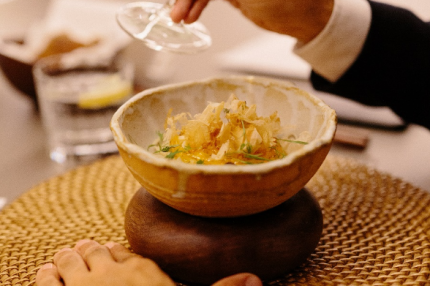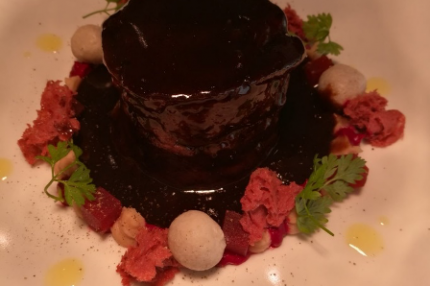THE PAIRINGS OF XAVIER THUIZAT
The three creations were prepared at the Hôtel de Crillon. Xavier Thuizat teaches us different styles of sake and pairings.
An Ode to Freshness – Hôtel de Crilllon – Paris
The dish: The tomato: Heritage tomatoes: Beefsteak, Black Krim, basil mousse, jellied tomato water, and crispy mouillette. A very vegetal style, very fresh and refreshing.
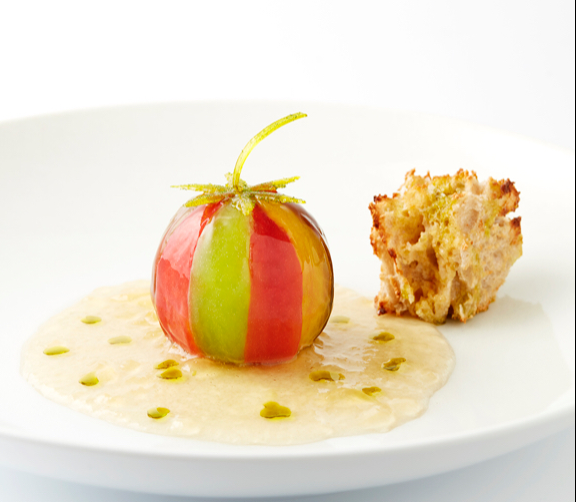
The pairing: “Served at the beginning of the meal, the junmai daiginjo style is essential in the modern method (Sokujo) for me. The floral aspect, as well as fennel/aniseed, which is always remarkable as it is found in Matsumoto's sake in Kyoto. It is the Ideal, with great precision and freshness, an educational pairing. When the customer begins with this type of pairing, on a green and fresh note as an appetizer with a junmai daiginjo of a refined and modern style, it is very understandable because it is direct, pure, and fresh. A perfect pairing. It could be close to a Riesling or a Sauvignon Blanc.”
Authenticity through Rusticity – Hôtel de Crilllon – Paris
The dish: Emulsified Button Mushrooms with Black Cardamom
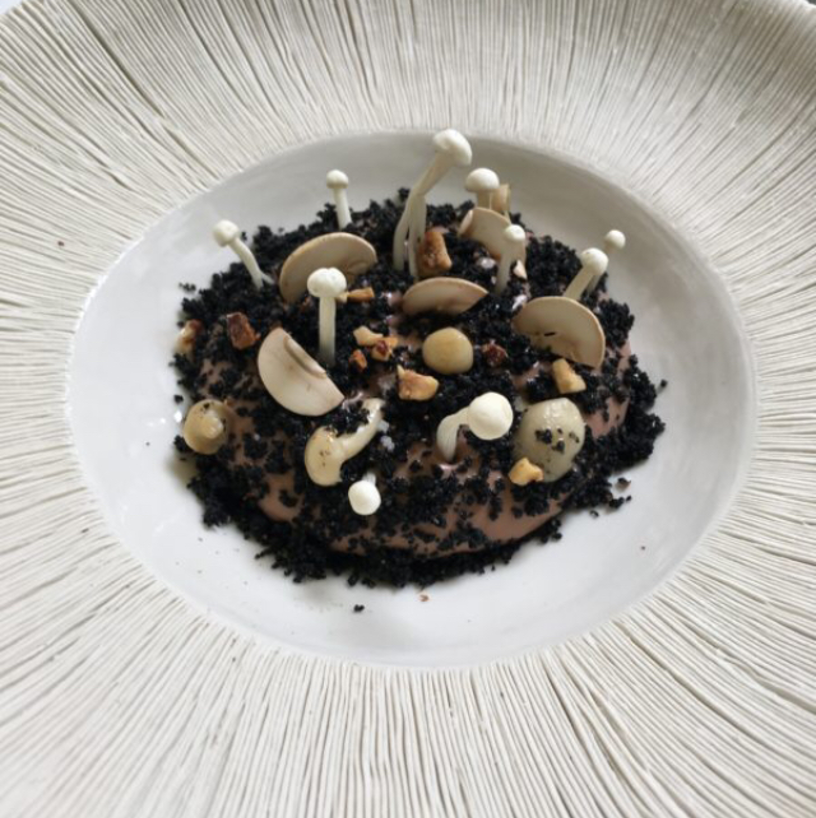
The pairing: “The mushrooms come from the earth, so we go back to the earth in the glass with a type of sake that I like very much: kimoto. One can hope for this authenticity and this beautiful rusticity which sometimes delivers us notes of undergrowth, wet earth, and mushrooms, which is a remarkable alliance. It is a style that I like because it's part of the houses like Daiichi in the north of Japan which is quite remarkable and dear to me. A sublime alliance.”
Another aromatic option: a Pu-erh tea, which smells of moist earth, mushrooms, aged cheddar, reblochon rind, fresh fig. An aromatic universe linked to Scotland’s best scotches.
Texture and temperature at the heart of the tastebuds – Hôtel de Crilllon – Paris
The dish: Pan Seared Foie Gras, Horseradish Bouillon
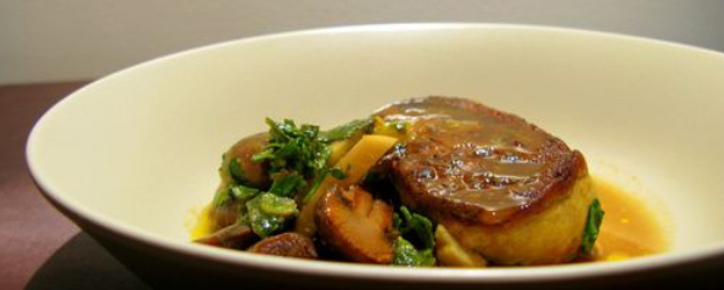
The pairing: “A junmai with a high rate of polishing, I mean very high: 70% minimum (70%, 75%, 90%) because I am seeking a maximum of intensity and of volume by heating the sake to 35 °C-37 °C (body temperature). Why? Because by heating the junmai, we get a sweeter sensation that will coat the melting texture of the foie gras, and the horseradish bouillon to make an aromatic echo. Horseradish is often found with junmai that is not very polished. The combination is sublime, and it is also a staging for the sommelier where he can prepare a bain-marie in front of the customer with very beautiful Japanese pottery. We can also challenge the customer by taking the temperature of the sake to check the 37 °C and create an interaction with the customer.
Honestly, the heated sake and the melting foie gras is absolutely sublime, it's a major pairing and it makes the customer's experience come alive.” (See: The heating of sake)
